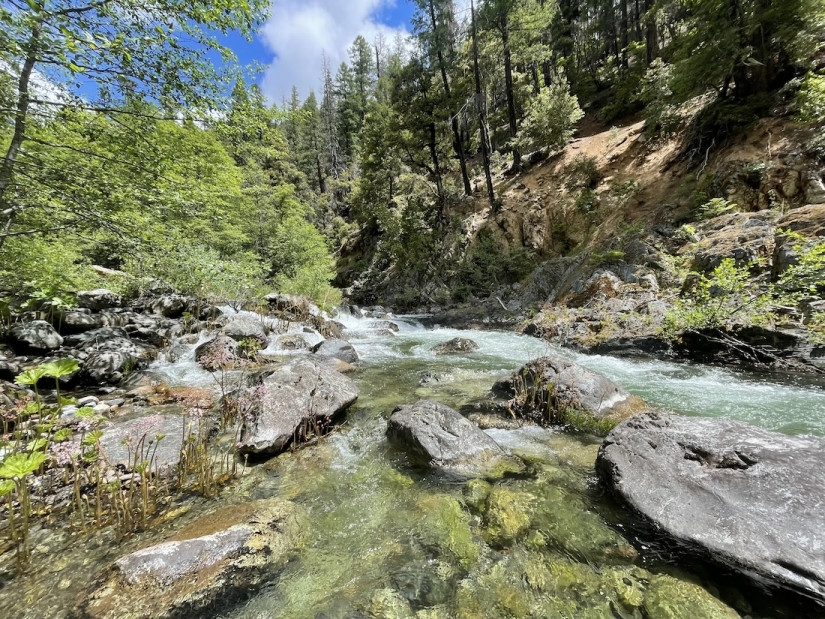
PROJECT HIGHLIGHT:
This project focuses on the Salmon River, which hosts the largest remaining non-hatchery population of spring-run Chinook in the Klamath Basin, making it a high priority for efforts to conserve Klamath Chinook biodiversity. The goal of the project is to improve understanding of how spring-run Chinook interact with other Chinook genotypes and use freshwater habitat, thereby enhancing our ability to conserve spring-run Chinook populations.
PROJECT SUMMARY:
Adult migration timing of Pacific salmon is a trait that contributes to the resilience of salmon populations. By entering fresh water at different times, distinct salmon runs experience distinct risks and opportunities for survival, growth and reproduction, which can vary year-to-year. In many watersheds, however, spring-run Chinook populations are imperiled because they spend more time in fresh water and are particularly vulnerable to freshwater habitat modification.
Spring-run Chinook were historically the most abundant run in the Klamath River, but they currently face extinction risk and are listed as “threatened” by the State of California. The overall goal of this project is to improve understanding of the life history and ecological characteristics of spring-run Chinook, which is needed to address issues of pressing management concern. Researchers are evaluating how juvenile life history strategies, breeding success and spawning and rearing locations may differ among Chinook run types. During the first two field seasons, the team collected fin clippings from juvenile Chinook and conducted genetic analysis to identify specimens by timing (spring-run or fall-run). With research still ongoing, the team has discovered that spring-run abundance varies among subbasins, historical barriers to reproductive isolation have been compromised, and hybridization between spring and fall runs is significant.
These findings will have direct application to management and conservation of spring-run Chinook and will inform targeted restoration efforts. Findings will also be relevant outside the Klamath Basin, in watersheds where spring-run Chinook exist and where Endangered Species Act petitions are pending, including the Oregon coast.
Community Mentors: Toz Soto (Karuk Tribe), Karuna Greenberg (Salmon River Restoration Council), Matthew Sloat (Wild Salmon Center)